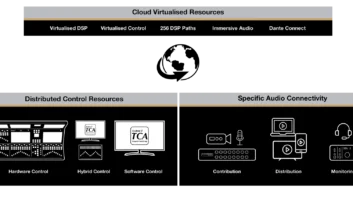The term ‘cloud washed’ was originally borrowed from the environmental movement’s coined term ‘green washed,’ which drew attention to businesses that were marketing their products as green without meeting any environmental standard. Cloud washing is a similar practice as software companies brand products with the buzzword ‘cloud’ without fundamentally changing the way they develop and support their software.
Vagueness around the definition of ‘cloud’, which in its most diluted form is a metaphor for ubiquitous network connectivity, facilitates cloud washing practices. Typically, businesses engaged in cloud washing take software designed for static on-premises deployment, wrap it in a virtual machine, allow businesses to deploy it on public cloud IaaS instances and pay by the hour to operate it.
But this is not what software innovators mean when they say ‘cloud’ and there are some very significant services missing from cloud washed software, especially for businesses. Automatic upgrades, maintenance and scalability: SaaS (Software as a Service) is a type of cloud software often used by businesses. Designed from the beginning for the cloud, true SaaS is managed and maintained for users across multiple levels of redundancy with multi-tenant architecture.
SaaS vendors take ultimate responsibility for operation of the environment, giving customers a virtualised infrastructure with continuous access to the latest product releases without impacting customisations. Also, SaaS automatically scales according to load for you, spinning up or down virtual machines as load dictates and load balancing across multiple instances. You’ll know if your software isn’t truly cloud-based if you or your IT department is responsible for software upgrades and managing virtual machine instances.
Cost savings through network automation: With network automation capabilities used by SaaS vendors, many labour-intensive tasks and processes can be mechanised. From automatic deployment to routine maintenance, network-enabled automation reduces business costs by reducing human involvement.
But that’s nothing compared to the cost savings gained from the scaling capacities of SaaS. With hundreds or even millions of customers served by a common infrastructure rather than dedicated independent infrastructures, SaaS vendors enter economies-of-scale, reducing overall costs with every additional user and passing that savings on.
A final advantage of true SaaS in regard to cost savings is the way it’s billed. Often called ‘pay-per-use’ or subscription billing, it is much easier to track and charge per user with SaaS and scale up or down depending on active users of the software. So you are only charged for what you actually use. The onus is on the vendor to provide value associated with an outcome rather than simply delivering software as a component of the solution.
High-availability and global performance: Software failures happen. However, resiliency and high availability are characteristics of any well-designed SaaS, which automatically switches to a redundant or standby server in case of failure. And, with SaaS, you can expect the same performance of the software no matter the local infrastructure, as long as you are somewhere in the internet-connected world.
For more on Signiant’s cloud solutions designed for moving large data sets around the world and into the cloud, visit us at IBC.







